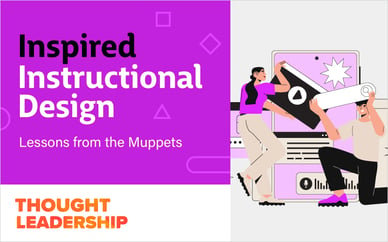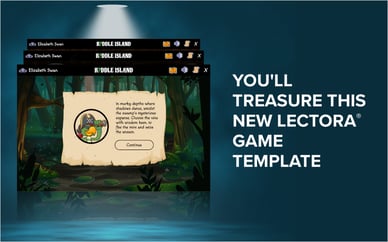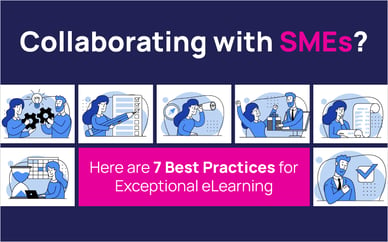As companies increasingly turn to eLearning to build critical workplace skills, learners must do more than just understand content. They must be able to apply it in a workplace that is often more nuanced than any training. Designing for that kind of transfer must be intentional and often can seem overwhelming in the face of limited resources and looming deadlines.
In this recent webinar, eLearning Brothers instructional designer Monica Newell showed how to promote skill transfer by designing interactions framed within the context of workplace applications.
To show you how to do this, she shared tons of examples from real-world courses developed by our custom eLearning development team.
Skill Transfer—What Is It and What’s the Goal?
- First, the worker must memorize “what.”
- They, they need to understand “how.”
- And finally, they learn how to apply the “what” and the “how.”
- The result? An employee capable of applying skills on the job.
In the workplace, situations are complicated by the environment, people, and nuance. The employee has to be aware of all of these things and take them into account along with what was learned in the course to effectively perform a task or make a complex decision.
To help your workers account for those nuances, you as the instructional designer need to embrace context.
There are a few different theories of training that are commonly used to inform how you build an eLearning course. These are:
- Theory of Identical Elements
- Stimulus Generalization Approach
- Cognitive Theory of Transfer
The Theory of Identical Elements asserts that transfer occurs when the skills being taught are identical to those needed on the job and placed within that context. In this case, the training environment and workplace are very similar, so it’s easier for learners to apply what they learned. This concept is also referred to as near transfer.
Given the limitations of eLearning, many skills can’t be taught as they would in the field. But soft skills and client interactions lend themselves fairly well to this. Jump to 9:27 in the webinar recording for examples of this. This theory could also be applied when building virtual reality training.
With the Stimulus Generalization Approach, lessons are structured, so only the most important and relevant parts of what is needed are taught. This maximizes training transfer by relying on far transfer—the learner’s ability to apply knowledge even when the work environment is dissimilar to the learning environment.
To help support your learners, identify what information is needed to teach the skill, brainstorm various applications, and then include multiple work-related activities that challenge the learner to make connections through transfer. Jump to 11:44 in the recording below for examples.
The Cognitive Theory of Transfer hinges on a learner’s ability to recall what they learned. This theory promotes the importance of making your learning material meaningful and memorable. That may involve catchy acronyms or activities that encourage the learner to engage with the material in a way that promotes knowledge retention. Jump to 14:57 in the webinar recording to see examples.
Now, you might be asking yourself “How am I supposed to factor in social, contextual, cultural, motivational, and theoretical factors and still get my course done on time?”
Monica shared a few tips for how we can design with transfer in mind and incorporate efficient ways to develop context.
- Pair Presentation with Application
- Make Instruction Interactive and Contextualized
- Use Scenarios to Introduce Nuance
Watch the webinar recording to see these instructional design tips put into action.
Want more eLearning inspiration?
Get more innovative ideas for your learning development and management from the eLearning ROCKSTARS Community members. Register today and start connecting with fellow training professionals.
You can also schedule a chat with our custom eLearning development team to get their tips or find out how they can help you create eLearning awesomeness.








